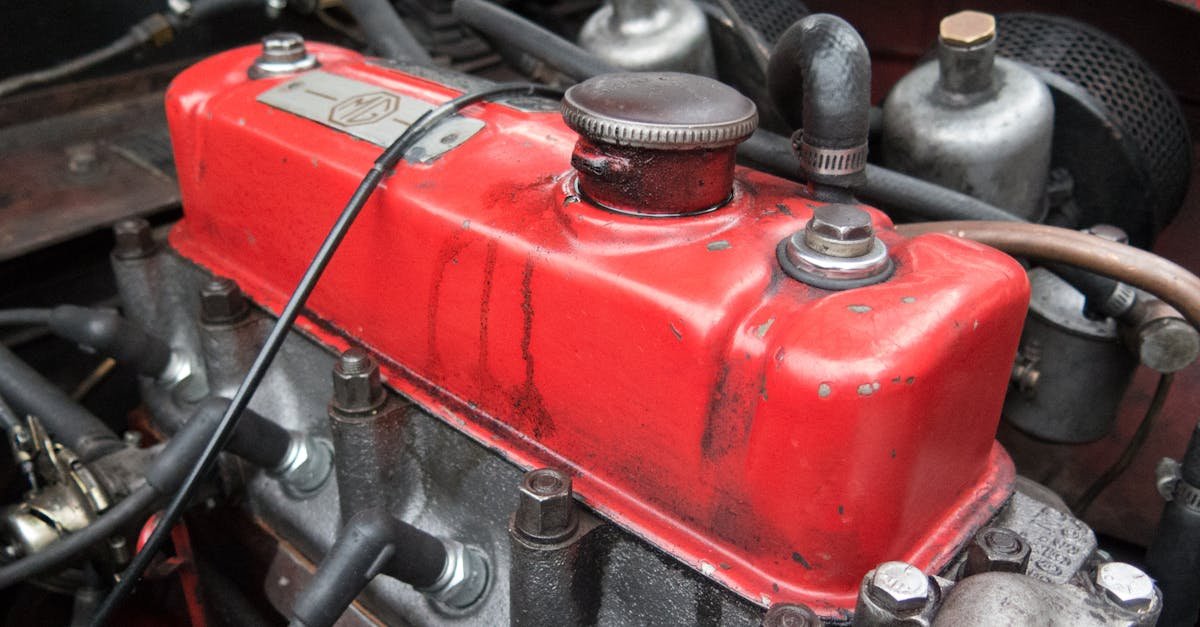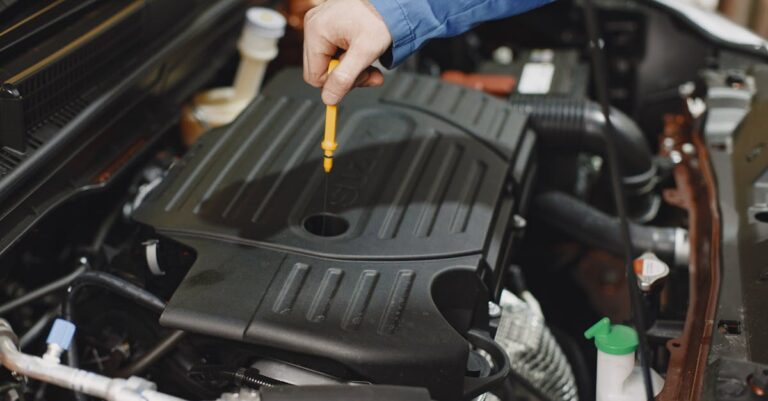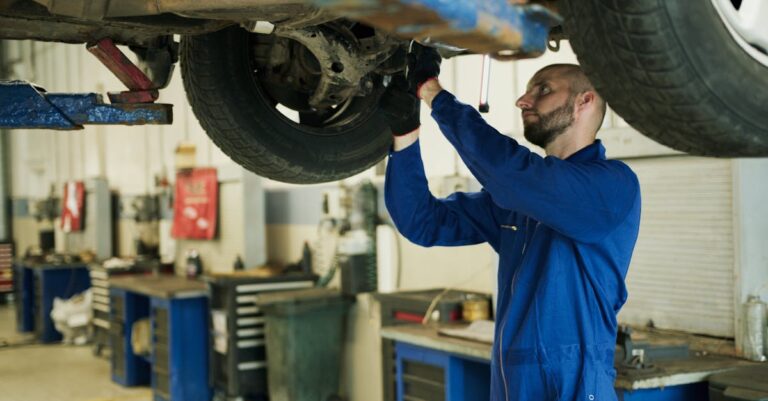Classic Car Maintenance Essentials TOC
- Classic Car Maintenance Essentials: Keeping Your Timeless Beauty Rolling
- Why Classic Car Maintenance is a Different Ballgame
- Routine Checks: The Foundation of Classic Care
- Deeper Dives: Essential Maintenance Tasks
- Body and Interior: Preserving the Aesthetics
- Storage Solutions: Protecting Your Investment
- Finding the Right Mechanic: A Partnership in Preservation
- Conclusion: The Rewarding Journey of Classic Car Ownership
- Frequently Asked Questions (FAQs)
Classic Car Maintenance Essentials: Keeping Your Timeless Beauty Rolling
Owning a classic car isn’t just about having transportation; it’s about possessing a rolling piece of history, a tangible connection to a bygone era. It’s the rumble of an engine untamed by modern muffling, the gleam of chrome under the sun, the distinct smell of vintage leather and aged metal. But let’s be honest, keeping that dream alive and well requires more than just occasional drives. Classic car maintenance is a unique commitment, a blend of passion, patience, and preventative care. Ready to dive into what it really takes to keep your timeless beauty purring?
Why Classic Car Maintenance is a Different Ballgame
You might be thinking, “Maintenance is maintenance, right? Oil changes, tire checks… same old, same old.” Well, yes and no. While the basic principles apply, classic cars operate under a different set of rules. They hail from a time before widespread computer diagnostics, advanced synthetics, and complex electronic systems. This simplicity can be charming, but it also means they need a more hands on, observant approach.
Understanding the Unique Needs of Vintage Vehicles
Think about it: the materials used decades ago weren’t always as durable or resistant to wear and tear as modern equivalents. Rubber components like hoses, belts, and seals degrade naturally over time, regardless of mileage. Electrical systems are often simpler but can be more prone to corrosion or grounding issues. Carburetors require different tuning and care than fuel injection systems. Metallurgy was different; lubrication needs might be specific, and certain modern additives could even be harmful. You’re not just maintaining a car; you’re preserving an artifact, and that requires understanding its specific historical context and engineering.
The Joy (and Challenge) of Preserving History
Part of the allure of classic car ownership is this very challenge. It fosters a deeper connection with your vehicle. You learn its quirks, its sounds, its smells. You become attuned to subtle changes that might signal an impending issue. It’s incredibly rewarding to pop the hood, identify a problem, and fix it yourself (or work closely with someone who can). It’s a hands on history lesson combined with mechanical satisfaction. Sure, it can be frustrating when a rare part is needed or a mysterious gremlin appears, but overcoming these hurdles is part of the journey and makes those perfect cruising days all the sweeter.
Routine Checks: The Foundation of Classic Care
Consistency is key. Unlike your modern daily driver that might only need attention every 5,000 or 10,000 miles, your classic benefits from much more frequent check ups. Think of it as a regular health screening for your automotive elder. These checks don’t always have to be time consuming, but doing them regularly can prevent minor issues from snowballing into major, expensive headaches.
Fluid Levels: The Lifeblood of Your Classic
Fluids are absolutely critical. They lubricate, cool, clean, and enable essential functions like braking and shifting. Letting any of them run low or become contaminated is asking for trouble. Make it a habit to check these levels frequently, perhaps every time you plan a drive or at least once a month.
Engine Oil: More Than Just Lubrication
Yes, oil lubricates moving parts, reducing friction and wear. But in older engines, it also plays a bigger role in cooling and cleaning. Classic cars often run hotter and may have less efficient filtration systems than modern cars. What oil should you use? That’s a big topic! Many classics originally specified non detergent or low detergent oils, but modern detergent oils offer better cleaning. However, using a high detergent oil in an engine that’s run on non detergent oil for decades can loosen accumulated sludge, potentially clogging oil passages. Also, many classic cars, especially those with flat tappet camshafts (common before the 1980s), require oil with higher levels of Zinc Dialkyl Dithiophosphate (ZDDP), an anti wear additive reduced in modern oils for emissions reasons. Using the wrong oil can lead to premature camshaft and lifter wear – a costly repair. Research your specific engine’s needs or consult a specialist. Check the dipstick regularly, not just for level, but also for color and consistency. Milky oil could indicate coolant leaking into the engine (head gasket issues!), while overly dark or gritty oil is overdue for a change. Don’t just follow mileage for changes; time is also a factor, as oil degrades even when sitting. An annual change is often recommended, even for low mileage classics.
Coolant: Preventing Overheating Disasters
Overheating is a classic car killer. Vintage cooling systems often have lower capacity radiators and less efficient fans compared to modern vehicles. The coolant (antifreeze) prevents freezing in winter, boiling in summer, and crucially, inhibits corrosion within the cooling system (radiator, water pump, engine block passages). Use the correct type of antifreeze recommended for your vehicle’s year and metal types (older systems often used Inorganic Additive Technology or IAT, typically green). Mixing coolant types can cause gelling or reduce effectiveness. Check the level in the radiator (when cool!) or overflow tank. Look for leaks around hoses, the radiator, and the water pump. Flush and replace the coolant periodically (every 2-5 years is a common recommendation) to maintain its protective properties.
Brake Fluid: Stopping Power Essentials
This is non negotiable for safety. Brake fluid is hygroscopic, meaning it absorbs moisture from the air over time. Water in the brake fluid lowers its boiling point, which can lead to brake fade or failure under heavy use (imagine descending a long hill). Moisture also causes corrosion in brake lines, calipers, and the master cylinder. Most classic cars use DOT 3 or DOT 4 fluid. DOT 5 (silicone based) is sometimes used as it doesn’t absorb water, but it’s not always compatible with systems designed for DOT 3/4 and requires a complete system flush and potentially seal replacement. Never mix silicone and glycol based fluids. Check the master cylinder reservoir level regularly. If it’s low, you might have a leak somewhere in the system – inspect lines, calipers/wheel cylinders immediately. Plan to flush and replace brake fluid every 1-2 years, regardless of mileage.
Transmission Fluid: Smooth Shifting Secrets
Whether you have an automatic or manual transmission, the fluid is vital. Automatic transmission fluid (ATF) acts as a hydraulic fluid, lubricant, and coolant. Using the wrong type (Dexron, Mercon, Type F – classics used various types!) can cause shifting problems or damage. Check the level with the engine running and the transmission in Park or Neutral (consult your owner’s manual). Look for a bright red color and a clean smell. Brownish or burnt smelling fluid indicates overheating or wear and needs changing. Manual transmission fluid (gear oil) primarily lubricates gears. Check the level via the fill plug on the side of the transmission case. Different weights and types exist, so use what’s specified for your car.
Tire Care: Where the Rubber Meets the Road (Literally!)
Your tires are the only connection between your classic beauty and the pavement. Giving them proper attention is crucial for safety, handling, and ride quality.
Pressure Checks and Inflation
Underinflated tires generate excess heat, wear unevenly, negatively affect handling, and decrease fuel economy. Overinflation leads to a harsh ride and reduced grip. Use a reliable tire pressure gauge (digital or dial, not the cheap pencil type) to check pressures when the tires are cold (driven less than a mile). Don’t rely on the pressure molded into the tire sidewall; that’s the maximum pressure. Check your car’s owner’s manual or door jamb sticker for the recommended pressures. Classic car tire pressures might differ from modern recommendations, especially if you’re running non standard tires. Check pressures at least monthly.
Tread Inspection and Age
Adequate tread depth is essential for grip, especially in wet conditions. Use the penny test (if you can see all of Lincoln’s head, it’s time for new tires) or look for the built in wear bars. Inspect for uneven wear patterns, which could indicate alignment issues or improper inflation. But here’s a crucial point for classics: age matters as much, if not more, than tread depth. Tires degrade over time due to ozone exposure and temperature cycles, even if the car isn’t driven much. The rubber becomes hard and brittle, losing grip and increasing the risk of blowouts. Check the DOT code on the sidewall; the last four digits indicate the week and year of manufacture (e.g., 3218 means the 32nd week of 2018). Most experts recommend replacing tires that are 6-10 years old, regardless of tread depth. Also consider if your car originally used bias ply tires. While radials generally offer better handling and wear, sticking with bias ply might be important for concours authenticity or specific ride characteristics.
Essential Maintenance Tasks
Beyond the frequent checks, some components require periodic inspection and maintenance to ensure reliability and safety.
Battery Health: Sparking Life into Your Classic
Classic cars often sit for extended periods, which is tough on batteries. Even small electrical draws (like a clock) can drain a battery over weeks or months. A weak battery won’t just leave you stranded; low voltage can sometimes cause issues with other electrical components. Keep the battery terminals clean and tight; corrosion (that white or blue fuzzy stuff) inhibits electrical flow. Use a wire brush and protective spray. Check the electrolyte level if you have a non sealed battery and top up with distilled water if necessary. The best way to maintain a battery during storage or infrequent use is a battery tender or maintainer. This device monitors the battery’s charge and provides a slow, trickle charge only when needed, preventing overcharging while keeping it topped up. Consider a battery disconnect switch for longer storage periods as an extra precaution.
Belts and Hoses: The Unsung Heroes
These rubber components are often overlooked until they fail, which can happen suddenly and leave you stranded. Belts drive crucial accessories like the alternator, water pump, power steering pump, and air conditioning compressor. Hoses carry vital fluids like coolant and fuel. Inspect belts for cracks, fraying, glazing (shiny appearance), or excessive slack. Press on the longest span of the belt; it should deflect about half an inch. Inspect hoses for cracks, bulges, softness, or mushiness, especially near the clamps. Squeeze them (when cool!); they should feel firm, not spongy. Pay close attention to radiator hoses, heater hoses, and fuel lines. Due to age degradation, it’s often wise to replace belts and hoses proactively every few years, even if they look okay visually. It’s cheap insurance against a roadside breakdown or even engine damage from overheating.
Brake System Integrity: Safety First, Always
We mentioned brake fluid, but the mechanical components need regular attention too. Visually inspect brake lines (both metal and rubber flexible hoses) for leaks, cracks, or corrosion. Rubber lines perish over time and can collapse internally or balloon under pressure, leading to a spongy pedal or pulling. Check brake pads (for disc brakes) or shoes (for drum brakes) for wear. Listen for squealing or grinding noises when braking. Inspect rotors or drums for scoring, cracks, or excessive wear. Older cars may have single circuit brake systems, meaning a leak anywhere can cause complete brake failure – this makes regular inspection even more critical! If your car has drum brakes, they may require periodic adjustment to maintain proper pedal feel and performance. Don’t skimp on brake maintenance; your life and the lives of others depend on it.
Body and Interior: Preserving the Aesthetics
Maintenance isn’t just mechanical. Preserving the look and feel of your classic is equally important for enjoyment and value.
Washing and Waxing: Protecting the Paint
Regular washing removes dirt, grime, bird droppings, and other contaminants that can etch or damage the paint. Use a dedicated car wash soap (not dish soap, which strips wax) and a soft wash mitt. Dry thoroughly with a microfiber towel to prevent water spots. Older paint finishes (like single stage lacquer or enamel) may require different care than modern clear coats. Be gentle! Applying a quality wax or sealant several times a year provides a protective barrier against UV rays and contaminants, enhances shine, and makes future washing easier. Don’t forget to clean and polish chrome trim; specialized chrome polish can remove light rust and restore luster. Address any paint chips promptly with touch up paint to prevent rust from starting.
Interior Care: Keeping it Classy Inside
The interior is where you spend your time enjoying the drive. Keep it clean and protected. Vacuum carpets and upholstery regularly. Use appropriate cleaners and conditioners for leather or vinyl seats to prevent cracking and fading. Protect the dashboard from UV damage with a sunshade when parked and use a suitable protectant (avoid overly greasy products). If your classic has wood trim, use specialized wood polish. Clean glass inside and out for clear visibility. Addressing musty smells might involve checking for water leaks (window seals, trunk seals) and ensuring carpets are dry.
Storage Solutions: Protecting Your Investment
How you store your classic car, especially during off seasons or long periods of inactivity, significantly impacts its preservation. Ideally, store it indoors in a dry, climate controlled environment. If that’s not possible, a well ventilated garage is the next best thing. Avoid storing it under trees (sap, bird droppings) or on grass/dirt (moisture). Use a breathable car cover; non breathable covers trap moisture, which can damage paint and promote rust. Before storage, wash and wax the car. Fill the fuel tank and add a fuel stabilizer to prevent gasoline degradation and gumming up the fuel system (especially important with modern ethanol blended fuels). Connect a battery tender. Inflate tires to slightly higher pressures to prevent flat spotting, or consider using tire cradles. Place mothballs or rodent repellent inside and around the car to deter pests.
Finding the Right Mechanic: A Partnership in Preservation
Unless you’re a highly skilled mechanic yourself, you’ll likely need professional help at some point. Finding the right mechanic is crucial. Your average corner garage might not have the experience, tools, or knowledge to work on classic cars. Look for specialists who understand the nuances of vintage vehicles, or even better, specialize in your car’s make or model. Ask fellow classic car owners for recommendations. Visit potential shops, look at the cars they work on, and talk to the mechanics. You’re looking for someone who is passionate, knowledgeable, patient, and communicative. Building a good relationship with a trusted mechanic is invaluable. They become a partner in preserving your piece of automotive history.
Conclusion: The Rewarding Journey of Classic Car Ownership
Owning and maintaining a classic car is undoubtedly a labor of love. It demands more attention, more understanding, and often more patience than owning a modern vehicle. But the rewards are immense. It’s about the driving experience, the thumbs ups from passersby, the conversations at car shows, and the deep satisfaction of keeping a piece of history alive and running beautifully. By embracing these maintenance essentials – the routine checks, the deeper dives, the aesthetic care, and finding the right help when needed – you’re not just performing upkeep; you’re curating an experience and ensuring your classic beauty continues to roll for generations to come. Enjoy the ride!
Frequently Asked Questions (FAQs)
-
How often should I drive my classic car?
Regular driving (e.g., once or twice a month) is actually beneficial. It helps keep fluids circulated, prevents seals from drying out, keeps the battery charged (to some extent), and helps prevent flat spots on tires. Short trips aren’t ideal as they don’t allow the engine and fluids to reach full operating temperature, which can lead to condensation buildup. Aim for drives long enough to get everything properly warmed up.
-
Is modern ethanol blended gasoline (E10/E15) safe for my classic car?
It can be problematic. Ethanol can degrade older rubber and plastic fuel system components (lines, seals, carburetor parts) not designed for it. It also absorbs water more readily, potentially leading to corrosion and fuel contamination, especially during storage. If possible, use ethanol free gasoline. If unavailable, use a fuel stabilizer specifically designed to counteract ethanol’s effects, and consider upgrading fuel lines and components to ethanol resistant materials.
-
Do I need to use a lead substitute additive in my classic car?
It depends on the engine. Cars built before the mid 1970s often had valve seats designed to rely on the cushioning effect of tetraethyl lead in gasoline. Running unleaded fuel can cause valve seat recession over time. However, many engines have proven durable without lead, or may have already had hardened valve seats installed during a previous rebuild. If your engine requires leaded fuel and hasn’t been modified, a lead substitute additive is generally recommended to protect the valve seats.
-
My classic car has drum brakes. Are they safe?
When properly maintained and adjusted, drum brakes are perfectly safe for normal driving conditions they were designed for. They may not offer the same level of fade resistance or wet weather performance as modern disc brakes, but they provide adequate stopping power. The key is regular inspection, ensuring shoes have plenty of material, drums are within spec, wheel cylinders aren’t leaking, and they are correctly adjusted. Some owners choose to upgrade to disc brakes (especially on the front) for improved performance, but well maintained drums are generally sufficient.
-
Where can I find parts for my classic car?
Finding parts can be part of the adventure! Start with specialists who cater to your specific make and model – many exist online and advertise in classic car magazines. Online forums and owner’s clubs are invaluable resources for sourcing parts and advice. Websites dedicated to classic car parts, swap meets, and even online auction sites can yield results. Sometimes NOS (New Old Stock) parts turn up, while other times quality reproduction parts are available. Networking with other owners is often the best way to find rare components.









